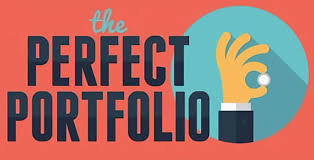To build the perfect portfolio, answer these 4 questions
It’s fair to say that good Portfolio Managers earn their keep. Building an investment portfolio is a rigorous process that involves research, knowledge and diligence, as well as good instincts and strong self-discipline.
To do this well, I think that you need to answer four simple questions.
Here they are.
1. What am I trying to achieve?
The first question you should always ask is: “What am I trying to achieve?. This goes for whether you are making the investment decisions yourself or you’re giving your money to a third party Fund Manager. If you are the Fund Manager you’ll need to ask “What is my investor trying to achieve?”.
It might sound obvious, but you would be surprised how often the answer to this question is taken for granted or even overlooked altogether.
You should always ask this question without giving any consideration as to how you are going to do it. Otherwise you’re likely to get bogged down in the detail of your investment choices, and this will alter your thinking about what you are trying to achieve.
Always remember to be realistic. Don’t come up with fanciful or unachievable goals that are going to cloud your judgement when it comes time to trade. Be clear and certain about what you are trying to achieve.
2. What’s my Edge?
Once you’ve worked out what you want to achieve, ask yourself what’s your ‘Edge’ for achieving it. In other words, what is it that separates you from any other investor or portfolio manager?
Here’s a tip for answering this question. There’s no such thing as a free Edge.
Your Edge comes directly from your work. It may take the form of more detailed analysis, better models, better data or anything else that you do particularly well. But it always has to have a grounding in something you do better or know better than anyone else.
If it’s freely available, it’s simply not your Edge.
It’s this Edge that will drive your asset decisions and lead you to make a call on which assets to own or ‘go short’: which assets you want in your portfolio.
But you’re not finished yet. The assets you have just selected need to be put together in a way that gives you the best chance of achieving your goals (the answer to Q.1) and that still involves answering questions 3 and 4.
3. What does the rest of my world look like?
The third question to ask is what the rest of your world looks like. What other assets do you own? What other risks are you exposed to?
The answer to this question has a big impact on your perfect portfolio. Answering it well means that two people with the same goals, the same edge, and the same asset decisions may end up with two very different looking portfolios.
4. How do I bring all this together?
You now have your answers to these 3 questions:
- You know your goals
- You understand your Edge and that has given you your asset choices
- You have a good idea what the rest of your world looks like
So how do you use this information to build your portfolio?
This is by far and away the most difficult question to answer. That’s because you must use all the information you gathered in answering Q’s 1-3, and do it consistently.
It is very common to let human qualities like emotion or distraction get in the way at this stage, and when that happens, your carefully prepared responses to Q’s 1-3 go out of the window.
If you want to be successful then you must perform this task: combining the three answers consistently every time.
And that is why we at Sherpa Funds Technology developed SherpaORS, a tool specifically designed to answer Q4 and produce an optimum risk size for every single trade.

